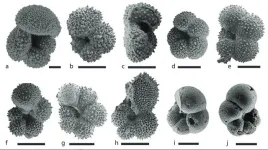MADRID – The University of Texas MD Anderson Cancer Center’s Research Highlights showcases the latest breakthroughs in cancer care, research, and prevention. These advances are made possible through seamless collaboration between MD Anderson’s world-leading clinicians and scientists, bringing discoveries from the lab to the clinic and back. This special edition features presentations by MD Anderson researchers at the 2024 European Hematology Association (EHA) Congress.
Triplet therapy significantly improves response rates in mantle cell lymphoma patients (Abstract LB3439)
Mantle cell lymphoma is a subtype of Non-Hodgkin’s lymphoma for which frontline therapy has not been optimized. The Phase III ECHO trial, led by Michael Wang, M.D., examined the addition of the BTK inhibitor acalabrutinib to chemoimmunotherapy (bendamustine and rituximab) in previously untreated patients. Enrolled patients were randomly assigned the targeted therapy or a placebo plus bendamustine and rituximab. Patients received six cycles of the therapy followed by rituximab maintenance for two years. At a median follow-up of 45 months, patients who received the targeted therapy had a statistically significant improvement in median progression-free survival at 66.4 months compared to 49.6 months in the placebo arm. Overall response (OR) and complete response (CR) rates for patients treated with the targeted therapy was 91% and 66%, respectively. Patients treated with the placebo had OR and CR rates of 88% and 53%, respectively. Side effects and adverse effects were as expected. Wang will present the primary data June 15.
Novel treatment improves response and survival rates for life-threatening hyperinflammatory condition (Abstract LB3442)
Hemophagocytic lymphohistiocytosis (HLH) is a life-threatening hyperinflammatory condition involving excessive immune activation. One subtype, malignancy-associated HLH (mHLH), has a 50% mortality rate at two months. To address this unmet need and improve outcomes, Abhishek Maiti, M.D., Naval Daver, M.D., Swami Iyer, M.D., and colleagues led a Phase Ib study evaluating the safety and efficacy of ELA026 – a first-in-class monoclonal antibody targeting immune-related inflammation – in newly diagnosed and previously treated participants with secondary HLH. In the first two cohorts assessing dosage, nine patients (75%) achieved responses. Treatment-naïve patients had a median survival of five months, leading researchers to target this population for the third cohort. As of April 17, 2024, all eight treatment-naïve patients with mHLH across all cohorts had achieved responses, and survival was 100% at two months with manageable side effects. These preliminary data suggest that ELA026 is safe and improves outcomes for patients with treatment-naïve mHLH. The trial is ongoing, and Maiti will present updated findings June 16.
Menin inhibitor monotherapy yields high response rates in acute leukemia subtypes (Abstract S131)
Acute leukemias with KMT2A rearrangements (KMT2Ar) have poor outcomes with standard therapies, and there are no targeted therapies currently available. In the Phase II AUGMENT 101 trial, researchers led by Ghayas Issa, M.D., evaluated the safety and efficacy of revumenib, an investigational small-molecule menin inhibitor, in heavily pretreated patients with relapsed and refractory KMT2Ar acute leukemias. Patients received oral revumenib twice daily in 28-day cycles. Responses were observed in 60% of those with these genetic alterations. At a median follow-up of 6.1 months, 13 patients (23%) had achieved a complete response (CR) or a CR with partial count recovery. In addition, 68% of those who responded had no measurable residual disease detected. These results have been filed with the Food and Drug Administration for regulatory approval of revumenib. Issa will present findings June 14.
Investigational oral menin inhibitor is safe and effective in acute leukemia subtypes (Abstract S132)
Relapsed and refractory acute myeloid leukemia (AML) with NPM1 mutations and MLL rearrangements, such as KMT2Ar, have been shown to be sensitive to menin inhibition. In a Phase I/II trial, researchers led by Naval Daver, M.D., and Hagop Kantarjian, M.D., investigated DSP-5336, an oral small molecule designed to inhibit the menin-MLL interaction. As of data cut-off, the trial enrolled 58 patients who were previously treated for AML (relapsed/refractory) with median of three prior therapies. Patients received 40-300mg twice daily in the dose-escalation phase. Researchers observed more frequent responses in patients who received doses of more than 140 mg, twice a day; the overall response rate for this group with single-agent DSP-5336 was 57%, and the composite complete remission rate was 33%. The therapy was well tolerated with no dose limited toxicities to date. There were no severe cases of differentiating syndrome, which have been seen with other menin inhibitors in AML. The trial is on-going to determine a recommended Phase II dose. Daver will present updated safety and efficacy data June 14.
Patients with newly diagnosed and relapsed/refractory AML achieved high response rates with novel combination therapy (Abstract S136)
While the majority of newly diagnosed (ND) patients with AML receiving frontline therapy achieve remission, 30-40% will experience a relapse. In relapsed/refractory (R/R) AML, only a minority respond to conventional chemotherapy, highlighting the need for better treatment options. In a Phase II trial, Wei Ying Jen, and Courtney DiNardo, M.D., investigated the multiagent regimen of fludarabine, cytarabine, granulocyte colony-stimulating factor, and idarubicin (FLAG-IDA), combined with venetoclax (VEN) in ND and R/R AML patients. As of January 2024, 127 patients received a median of two cycles of FLAG-IDA+VEN. Results showed a composite complete remission (CRc) rate of 96% and an overall response rate (ORR) of 99% in ND AML, with 88% achieving undetectable measurable residual disease (MRD). Responses in R/R patients were particularly favorable in those with only one prior line of treatment and who did not harbor TP53 mutations. In this group, CRc was 75%, with 79% achieving undetectable MRD. Jen will present updated findings June 15.
First-line combination therapy for CLL yields high rates of undetectable measurable residual disease remission (Abstract S164)
Previously untreated patients with chronic lymphocytic leukemia (CLL) achieved high rates of bone marrow undetectable measurable residual disease (U-MRD) remission when treated with a triplet targeted therapy, according to Phase II trial data presented by Nitin Jain, M.D. Patients were treated with pirtobrutinib, venetoclax and obinutuzumab, and their responses were evaluated by imaging and bone marrow assessment after seven and 13 treatment cycles. After six months of combined treatment (seven cycles), 76% of patients achieved bone marrow U-MRD at high sensitivity and 88% achieved peripheral blood U-MRD at high sensitivity, as assessed by next-generation sequencing. Side effects were similar to those in previous studies with combination targeted therapies. Jain will present updated findings June 14.
Combination therapy continues to show promise in significantly reducing spleen volume in patients with myelofibrosis in longer term follow-up (Abstract S222)
In a previous report of the Phase III international TRANSFORM-trial, the JAK inhibitor ruxolitinib plus the BCL-xL inhibitor navitoclax was twice as effective in reducing enlarged spleens compared with ruxolitinib alone in adult patients with intermediate or high-risk myelofibrosis, a rare bone marrow cancer. Spleen size reduction is a major indicator of clinical improvement. Updated data from the trial, led by Naveen Pemmaraju, M.D., demonstrate 63% of patients treated with navitoclax and ruxolitinib achieved a reduction in spleen volume of 35% or greater (SVR35) at 24 weeks, compared to just 32% in the control group. SVR35 at any time during the trial was achieved by 77% of the targeted therapy group versus 43% of the control group. Researchers observed no new adverse effects. Pemmaraju will present updated data June 15.
Read this press release in the MD Anderson Newsroom.
- 30 -
END




